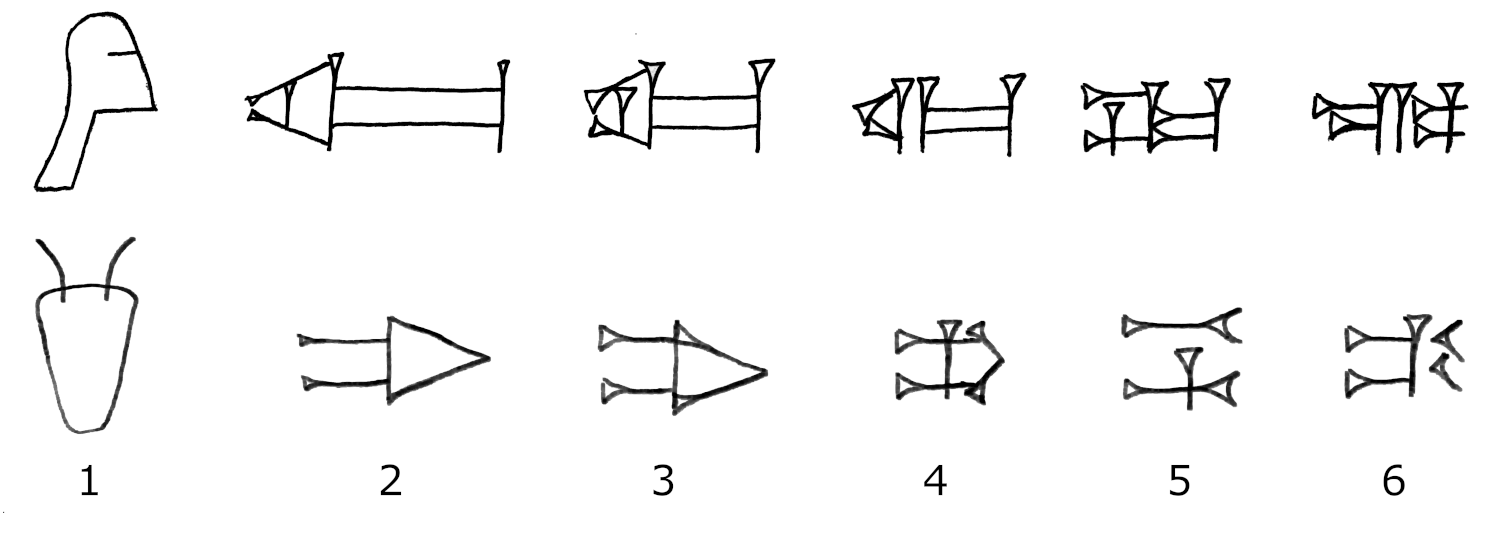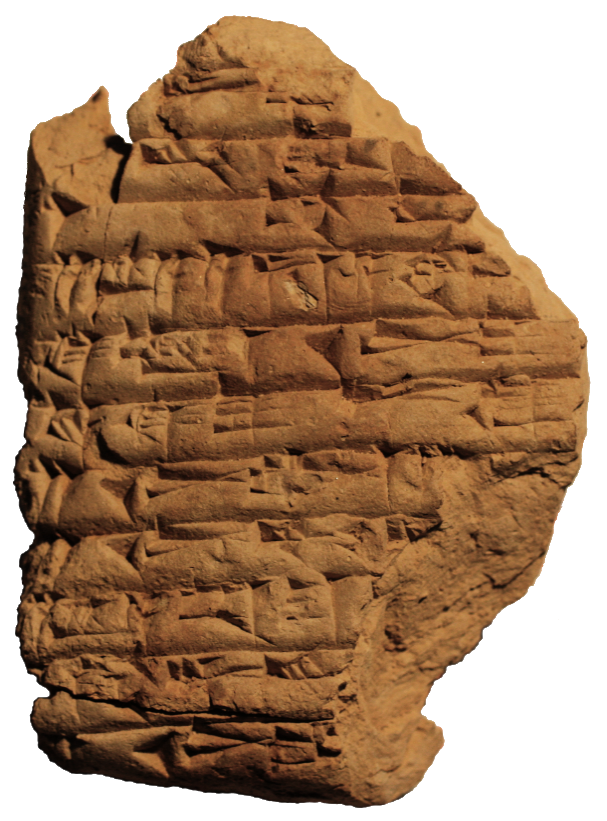About the Virtual Cuneiform Tablet Reconstruction Project
The Virtual Cuneiform Tablet Reconstruction Project was inspired by the ambition to support virtual access to cuneiform artefacts and to reconstruct cuneiform tablets by joining virtual fragments together.
About Cuneiform
Cuneiform was humankind’s earliest writing. Dating back five thousand years, cuneiform was written by making impressions in clay “tablets”. It was the original information technology.
Cuneiform script was in use for some three thousand years in ancient Mesopotamia, the region in and around modern day Iraq and Syria. Emerging from a simple system of pictograms, the script evolved into a sophisticated writing system.
 How the cuneiform signs for head (“SAG”) and cattle (“GU”) evolved over time.
How the cuneiform signs for head (“SAG”) and cattle (“GU”) evolved over time.Original pictograms (1) evolved through Classical Sumerian, Old Babylonian and Middle Babylonian (2-4) into Neo-Babylonian (5) and into Neo-Assyrian (6) (Labat R. & Malbran-Labat, F., Manuel d'Epigraphie Akkadienne, Paris, 1963)

More about cuneiform
You can find out more about cuneiform writing and ancient Mesopotamia in these excellent videos:
- Cracking Ancient Codes: Cuneiform Writing - with Irving Finkel, Royal Institution, Jul 2019
- Irving Finkel teaches how to write cuneiform, British Museum Curator's Corner, 4(8), Dec 2108
- The Royal Game of Ur, Tom Scott vs Irving Finkel, Apr 2017
- Cuneiform: Irving Finkel & Jonathan Taylor bring ancient inscriptions to life, Jun 2014
Worldwide 3D Reconstructions
Many thousands of inscribed cuneiform tablet fragments have been excavated in the last 200 years but have become distributed within and between museum collections worldwide to which there is necessarily limited access. The pieces are complex 3D forms that belong to an unknown number of complete or incomplete tablets. Together they form an enormously complicated worldwide set of 3D jigsaw puzzles.

Virtual Reconstruction
If we have 3D models of real objects, we can join them together. This means we can reassemble broken objects, even when the pieces are a 1000km apart.
Virtual 3D Models
3D scanners create sets of points called vertices that define the shape of virtual objects. These vertices connect together to form a surface from a mesh of triangles. The triangles can be shaded according to the colour of the object and the virtual lighting. This is called rendering. We make the 3D model look real by wrapping it in pixels from photographs of the original object.
More Information
If you would like to know more about cuneiform and virtual reconstruction you may like to read: Virtual archaeology: how we achieved the first long-distance reconstruction of a cultural artefact
Funding: The Virtual Cuneiform Tablet Reconstruction Project evolved from seed-funded cuneiform digitization research led by Sandra Woolley and from collaborative co-investigator Leverhulme Trust Research Awards led by Assyriologist, Alasdair Livingstone, University of Birmingham (Study of Cuneiform Sign, £155,738) and Computer Scientist, Professor Eugene Ch’ng, University of Nottingham Ningbo China (A Collaborative Environment for Assisted 3D Reconstruction of Cuneiform Tablets, £97,532) More recently, the research has been funded by Keele University awards including a Faculty of Natural Sciences award of £7,200 (C6800-0714 FNS.SCM. 08.02.19), an ILAS Visiting Fellowship Award of £2,500, and Faculty Impact Acceleration Funds I, £2,494 (FNS 24.10.19), and II, £1,290 (FNS 7.02.20).